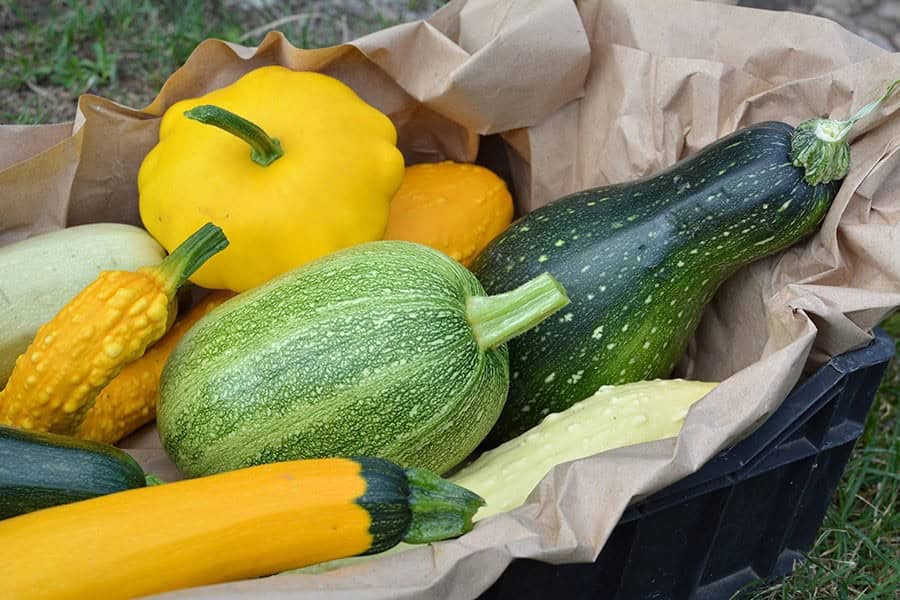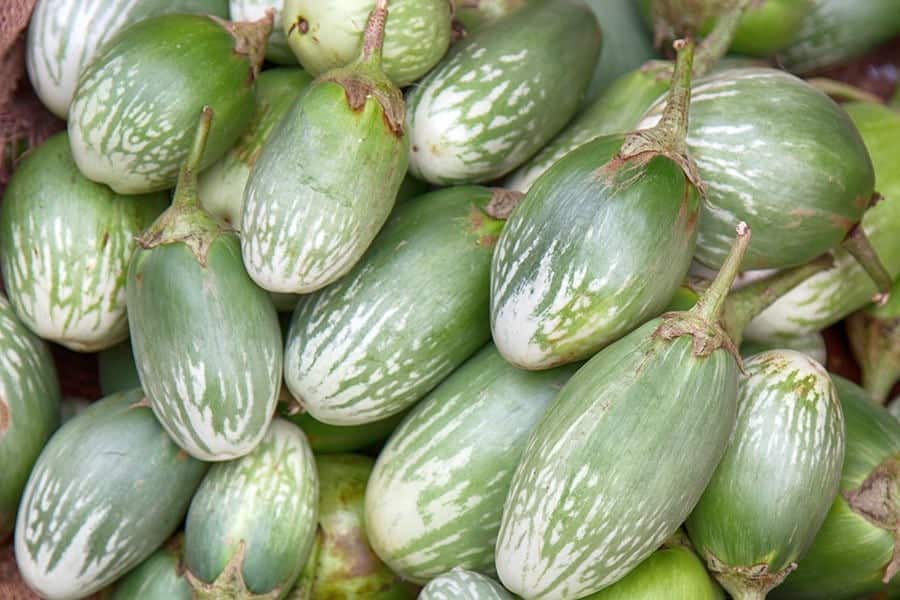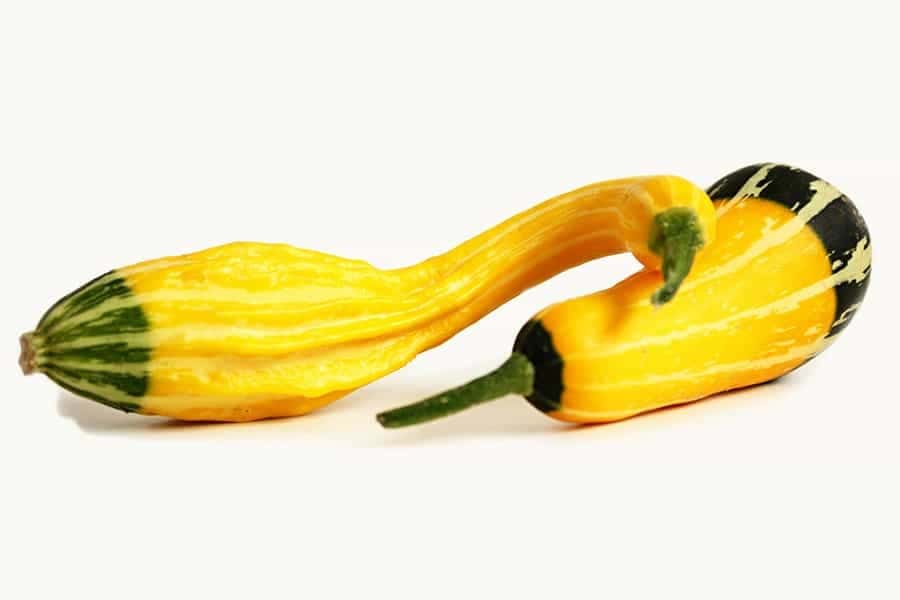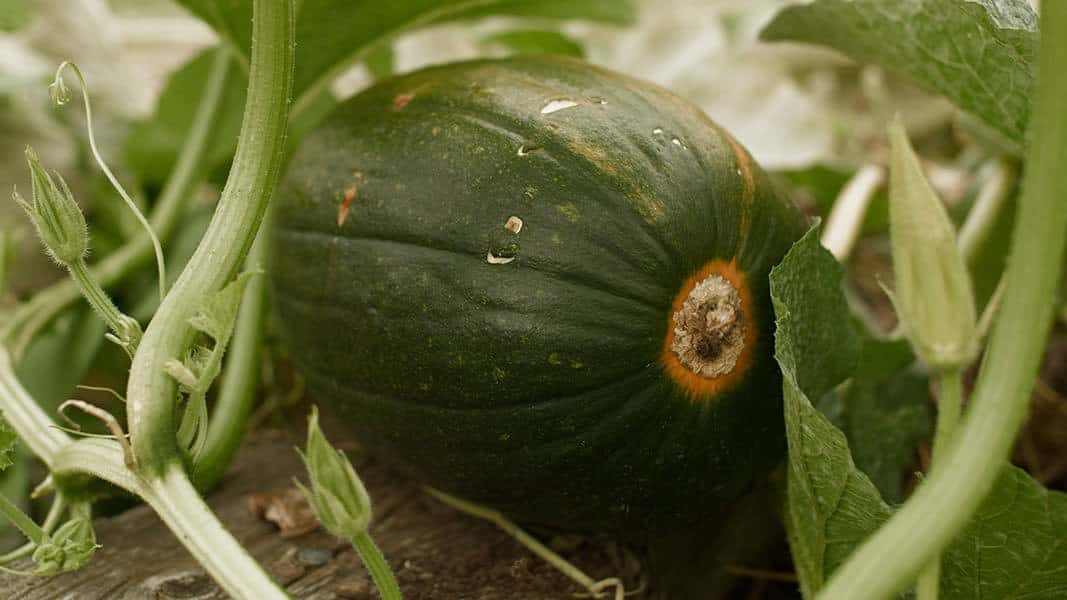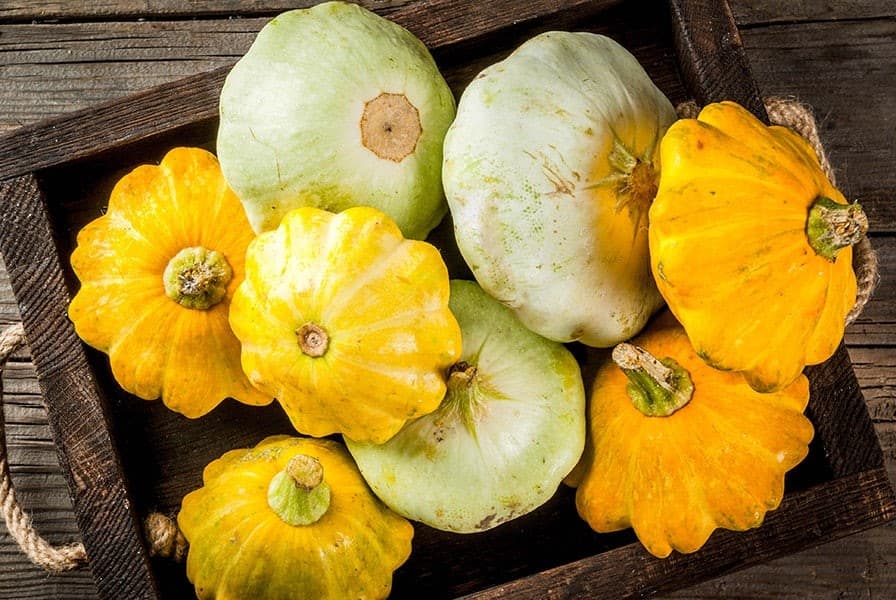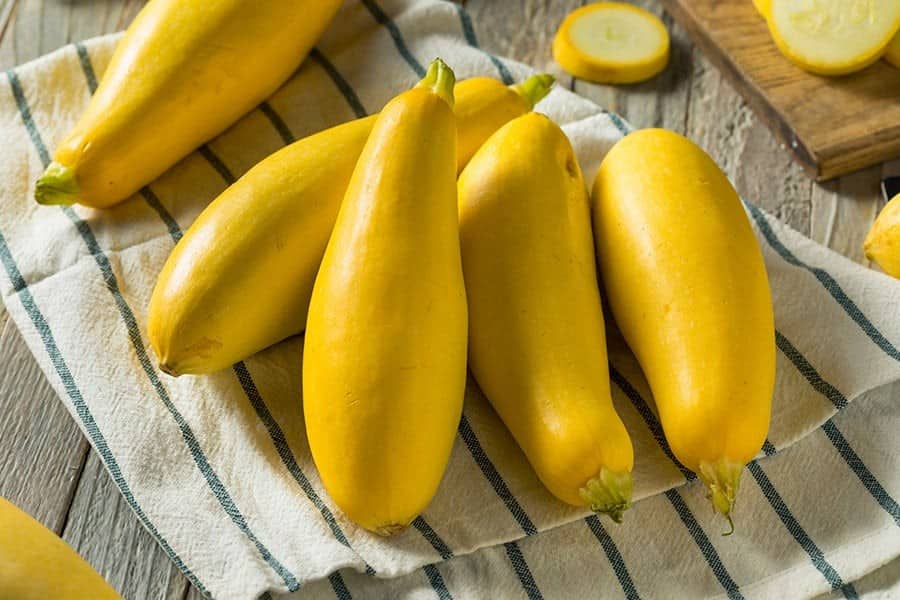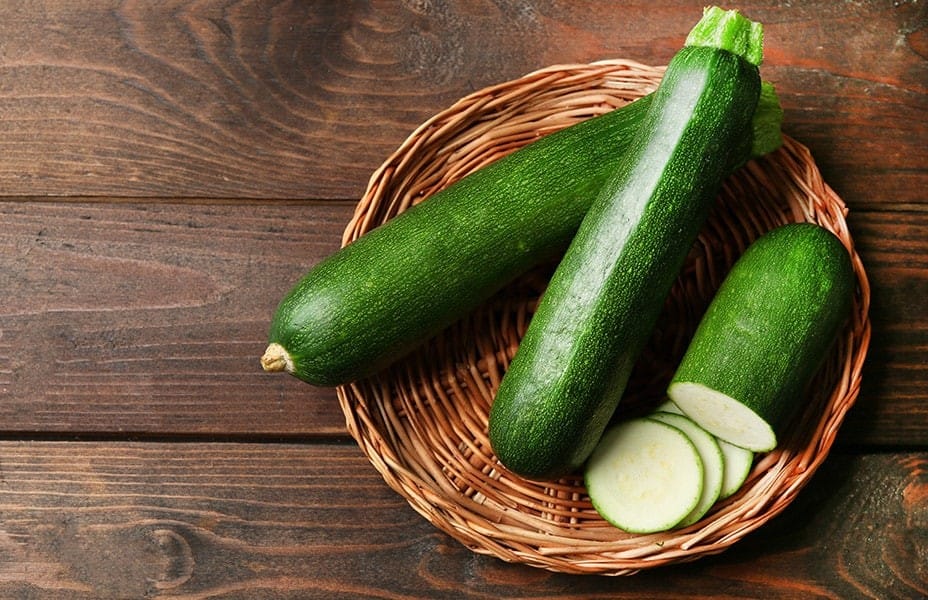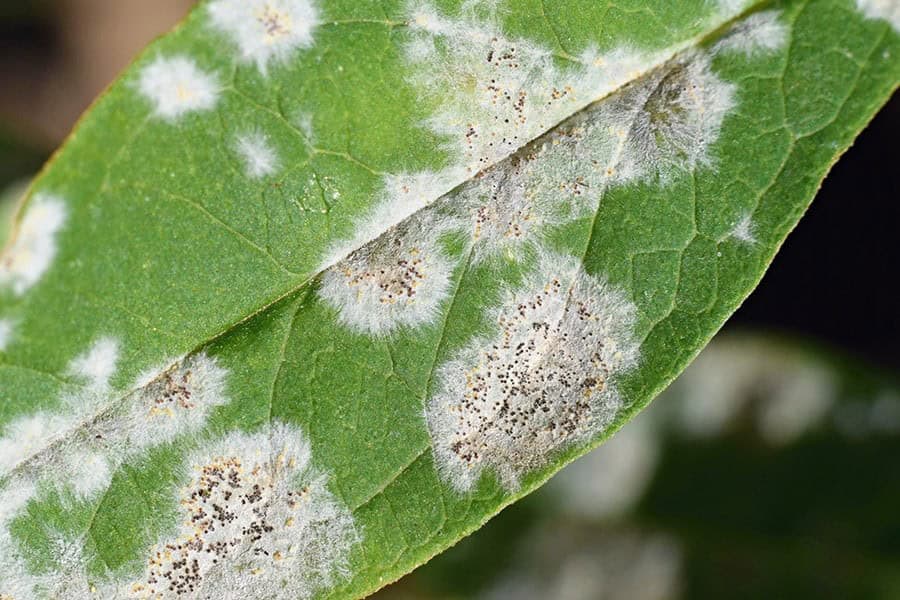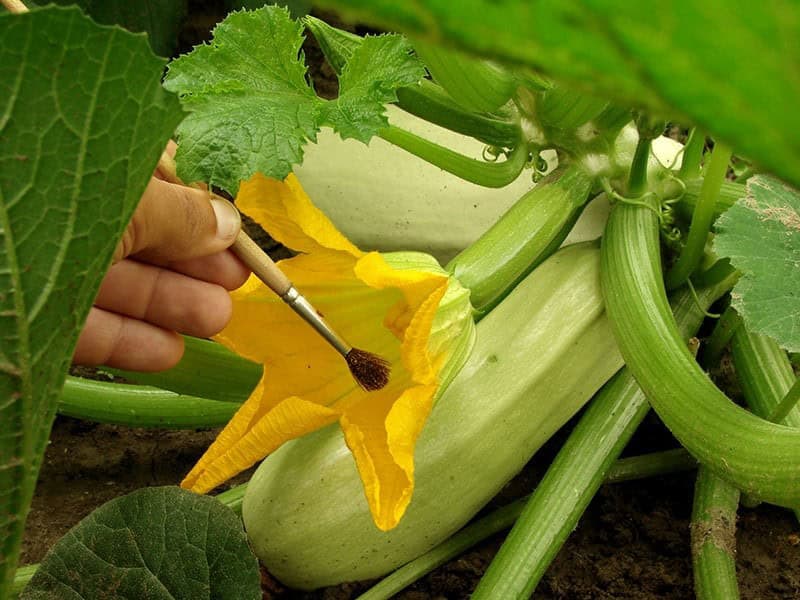Summer squash is an underrated gem of a crop. With its low maintenance requirements, diverse varieties, and versatility in cooking methods, it’s hard to understand why more people don’t cultivate it. A single plant can produce an abundance of fruit, not to mention the edible blossoms and leaves that add an extra layer of flavor and nutrition to your meals.
And when you’re done savoring the bounty, you can even save seeds from the mature fruit to replant next year’s crop, reducing waste and ensuring a continuous harvest. If you’re ready to unlock the magic of summer squash, let’s dive into the process.
Best Summer Squash Varieties
What makes summer squash unique is its immature harvesting process. Unlike winter squash, which is typically harvested when fully mature, summer varieties are picked before they reach their full potential. This is evident in the soft, thin skin of young zucchinis compared to the hard outer shell of a pumpkin. The diversity of summer squash varieties can be overwhelming, much like the phrase ‘So many books, so little time’ – it’s easy to feel like you’re drowning in options!
Some varieties are compact and space-consuming, while others are vining and can be trained to climb vertically. Whether you’re looking for a small, sweet snack or a large, robust main course, there’s a summer squash variety out there that suits your taste. For instance, you might consider trying some of these popular types:
Cousa
Cousa, also known as Middle Eastern or Lebanese squash, is a unique variety that boasts a blocky or squat shape, making it perfect for stuffing, grilling, or stir-frying. Its versatility extends to pickling, where it transforms into a tasty and tangy delight. On the other hand, ‘Magda’ stands out with its sweet, nutty flavor profile, achieving maturity in just 48 days, allowing for a relatively quick harvest.
Crookneck
The iconic yellow squash, with its unique warts and all, is a staple in the Vanorio household. Its bulbous base and curved neck make it easily recognizable. What sets this variety apart is its rich, buttery flavor and firm texture, making it an excellent choice for grilling or adding to salads raw. While some may find the characteristic bumps unappealing, I believe they’re a testament to the squash’s authenticity.
To reap the benefits of this open-pollinated variety, be sure to pick your squash when they’re small, as they tend to develop these distinguishing features later in their growth cycle. This particular type takes only 58 days to mature, making it a relatively quick-producing addition to any garden.
Tatume
Tatume, also referred to as calabacita or tatuma squash, is a native Mexican variety that excels in warm climates. What’s more impressive is its ability to transition from a summer squash to a winter squash with proper harvesting techniques. The squat fruits, resembling miniature watermelons, are ready to be plucked when they reach the size of a baseball.
Patty Pan
Patty pan squash, also referred to as Sunburst, Button or pattypan, exhibits a vibrant array of colors including orange, yellow, white, and green. Characterized by their small, rounded shape and shallow depth, these varieties boast scalloped edges that add to their visual appeal.
nThe classic ‘Benning’s Green Tint’ variety is specifically well-suited for stuffing purposes, while the blossoms from the plant can be pan-fried to create a delicious and crispy treat.
Notably, this variety takes 57 days to reach harvest maturity.
Straight Neck
Straight-neck squash varieties depart from their curved counterparts in a rather obvious manner – they boast straight necks instead. This characteristic is accompanied by a subtle flavor profile and a relatively brief growing season. Two notable examples of this type are ‘Early Prolific’ and ‘Zephyr’. The former matures 42-56 days after planting, yielding fruits that measure approximately six inches in length and boasting a satisfying taste.
In contrast, ‘Zephyr’ presents with faint white stripes and a green blossom end, its firm, nutty flesh ripening 54 days after planting.
Zucchini
Zucchinis, the classic summer squash, come in a range of shapes and sizes, including round and irregular forms. Among these varieties are some particularly unique and interesting ones. For instance, ‘Eight Ball’ is a fun, green zucchini that’s roughly the size of a pool cue ball, making it perfect for stuffing. It takes around 50 days to mature. Another standout variety is ‘Goldmine’, which boasts beautiful yellow skin with pale white stripes.
This prolific zucchini matures in just 50 days from planting. Finally, ‘Raven’ is a hybrid zucchini that’s incredibly easy to grow. Its hardy nature and high yield of slender, dark green fruit make it an attractive choice for gardeners. With a maturity time of only 48 days, ‘Raven’ is a great option for those looking to get the most out of their zucchini crop.
Costata Romanesco
For years, my family has cultivated Costata Romanesco, an Italian heirloom variety that’s been passed down through generations. This beloved vegetable is renowned for its exceptional flavor profile and the impressive size of its male flowers, which make a fantastic addition to any fried treat. With a relatively quick maturation period of just 52 days, gardeners can look forward to enjoying this delectable crop in no time.
Planting Summer Squash
Summer squash thrives in warm conditions, requiring full sun and heat. Its growth is fueled by rich, fertile soil with a pH range of 5.8-6.8. To promote healthy development, incorporate generous amounts of compost into the soil at planting time. This versatile vegetable grows well in USDA Zones 3-10, offering a wide range of suitable climates. When starting seeds, you can opt for indoor sowing four weeks prior to your region’s last frost date.
Plant them in three-inch peat pots or 18-cell seed trays filled with a soilless medium. Keep the soil consistently moist until germination occurs. Once the risk of frost has passed, transplant seedlings or established plants into their final positions. In the garden, space individual plants or seeds 18 inches apart in rows spaced three feet apart to ensure adequate air circulation and sunlight penetration.
Alternatively, you can plant seeds in mounded hills that are four feet apart, with three seeds per hill.
Protect Young Plants
When establishing seedbeds or transplanting new growth, consider using a row cover to enhance heat retention and deter unwanted insects. As your plants begin to flower, it’s essential to remove the cover as they require insect pollination to thrive. However, if pests become an issue in your garden, you can keep the row cover in place while manually pollinating your plants to ensure successful fruiting.
Container Planting
When cultivating squash in urban or patio settings, many gardeners rejoice at the news that bush varieties thrive in containers. The key to success lies not only in selecting the right variety but also in choosing a container of sufficient size. For instance, squash requires a larger vessel with a minimum capacity of five gallons, making small tree or bush-specific planters an excellent choice.
One of the primary advantages of container gardening is the ability to curate your own unique growing medium. By combining aged compost, potting soil, and vermiculite, you can create a nutrient-rich environment that fosters optimal squash growth. As with any container-grown crop, it’s essential to regularly check moisture levels and water accordingly – only when the soil feels dry to the touch.
Vertical Gardening
When cultivating a compact suburban garden or adopting Square Foot Gardening techniques, you’ll find that certain varieties thrive when trained to grow upwards on vertical supports. To facilitate this, it’s essential to construct a robust trellis system.
As the squash plants mature and produce heavy fruit, sturdy trellising is crucial to prevent damage and ensure optimal growth.
A welded wire fence or an arbor fashioned from lumber can serve as effective support structures for your vining squash varieties to climb upon.
Succession Planting
When dealing with mildews and squash bugs, I’ve found it more practical to eliminate affected plants rather than futilely attempting to combat the issues. Typically, these problems arise in mature squash plants, which means I’ve often already harvested a significant portion of the fruit before issues become apparent. To mitigate this problem, I employ a strategy called succession planting. This involves sowing new squash seeds every two weeks, with varying varieties depending on my mood.
Since squash grows relatively quickly, I can plant through early August and enjoy a continuous harvest until frost sets in.
Caring for Summer Squash
After successfully planting your seeds or seedlings, it’s crucial to provide optimal care to encourage vigorous growth and maximize your yield. This involves regular monitoring and maintenance to ensure your plants receive the necessary resources for a bountiful harvest.
Fertilizer
As a voracious grower, squash requires specific conditions to thrive. When planting, I make sure to select areas where I’ve previously incorporated well-rotted manure into the soil during the fall. Additionally, young seedlings benefit from regular watering with a diluted fish emulsion solution.
As the plants mature and begin producing fruit, I switch to foliar feeding in the early morning every week using either fish emulsion or a seaweed-based mix.
This targeted approach provides essential nutrients for optimal squash development.
Water
While squash plants require adequate moisture, they also need careful watering practices to prevent fungal diseases. To meet their needs, ensure the soil remains consistently moist by providing 1-2 inches of water per week, depending on your region’s temperature and sunlight conditions. Implementing drip irrigation is a more effective approach than overhead watering methods, as it reduces the risk of spreading fungal diseases that can be detrimental to squash plants.
Problems and Solutions for Growing Summer Squash
Summer squash crops often fall prey to an array of pests and pathogens, making them a challenging crop for gardeners to grow. Despite this, many varieties of summer squashes are still worth cultivating, as they can provide a bounty of delicious and nutritious fruit.
Powdery Mildew
Powderly mildew is a widespread issue affecting plants across the United States, with the southern regions being particularly vulnerable due to their hot and humid climate conditions. This fungal disease manifests as white blotches on leaf surfaces, hindering the plant’s ability to harness sunlight and potentially leading to leaf death or even total plant demise.
To mitigate this problem, it is essential to implement effective preventative measures, such as using drip irrigation systems, ensuring adequate air circulation around plants, and selecting resistant varieties. Additionally, neem oil can be used to inhibit the growth of the fungus, helping to protect your plants from its devastating effects.
Blossom End Rot
Blossom end rot, a common issue with summer squash, manifests as brown spots at the fruit’s tip that eventually turn mushy and black. While calcium deficiency is often cited as the culprit, simply adding more calcium to the soil won’t solve the problem. Instead, it’s essential to diagnose whether your soil lacks this vital nutrient by conducting a test. If the results indicate a calcium deficiency, you can consider applying calcium chloride or calcium sulphate.
However, even with an adequate calcium supply, the issue persists if the plant is not receiving sufficient water. In reality, the plant must absorb calcium through its roots, and for that to happen, it needs to receive consistent moisture. It’s only when both calcium and water are present in harmony that your summer squash will thrive.
Bacterial Wilt
Bacterial wilt is a devastating disease that can leave plants limp and lifeless, ultimately resulting in their demise. Once the condition sets in, there is no effective treatment available, leaving gardeners with little choice but to uproot the affected plant. A sudden wilting of the entire plant, unresponsive to even a generous watering session, may be a telltale sign that bacterial wilt has taken hold.
It’s crucial to prioritize plant health by keeping pests at bay, as these unwanted visitors can unwittingly spread the disease, exacerbating its impact.
Downy Mildew
The pesky downy mildew fungus produces telltale green or yellow spots on leaves, occasionally accompanied by a grayish fuzz on leaf undersides. To keep this unwanted growth at bay, aim for precise watering by targeting the soil around your plant’s base rather than overhead. Additionally, regular pruning can promote healthy air circulation within your plants’ foliage.
If the problem persists, consider using fungicides containing cyazofamid, fenamidone, or phosphorous acid to help regain control of the situation.
Zucchini Yellow Mosaic Virus
Zucchini yellow mosaic disease is notoriously challenging to diagnose due to its diverse manifestations. Affected plants may exhibit small or deformed leaves with a mottled appearance, while fruits can become stunted or even die off entirely. Moreover, this incurable disease is primarily spread through aphids, emphasizing the importance of maintaining effective aphid control measures.
Should your zucchini plant succumb to infection, prompt removal and destruction are essential to prevent further transmission.
Cucumber Beetle
Cucumber beetles are a common garden pest that can cause significant damage to your plants. These yellow and black striped or spotted insects not only feed on the leaves and stems of your plants, but also transmit deadly diseases such as bacterial wilt and mosaic virus. As they feed, cucumber beetles can already have spread disease to your plant, making insecticides less effective in controlling the infestation.
To manage these pests effectively, consider using yellow sticky traps or row covers to prevent them from reaching your plants in the first place.
Squash Bugs
The squash bug, a notorious pest, is known to thrive in gardens where summer squashes, melons, and cucumbers are cultivated. Its voracious appetite for sap leads to the browning and eventual death of leaves. To effectively mitigate this issue, maintain a tidy garden environment by regularly cleaning up any debris and mowing the borders. Additionally, ensure that plant waste is removed in the fall and till the soil in the spring to expose any pupae.
Furthermore, utilizing pyrethrin and neem oil sprays can help to keep these pests under control.
Poor Pollination
Summer squash relies heavily on insects for fertilization purposes. Having honey bees or encouraging wild bee species can significantly enhance pollination. However, poor pollination rates can lead to issues such as no fruits forming at all, or irregularly shaped fruits that fail to develop properly. To address concerns about inadequate pollinators, hand pollination may be a viable solution.
This process involves identifying the male flower, characterized by its lack of a swollen section and single stamen. Next, locate the tall stamen within the flower and collect the pollen using a small watercolor paintbrush. Subsequently, proceed to a female flower, distinguished by its swollen stem and pistil instead of stamen. Simply transfer the collected pollen to the interior of her flower.
Weeds
When growing summer squash in your garden, it’s essential to keep weeds under control. One effective way to do this is by using mulch. Not only does mulching help conserve water, but it also suppresses weed growth. Straw and wood chips are excellent options for mulching around your summer squashes. Additionally, landscaping fabric can be used as a barrier against weeds. Just remember to remove the fabric at the end of the season to allow the soil to breathe and replenish nutrients.
Harvesting
The struggle is real when it comes to dealing with monster zucchinis – those oversized, ten-pound fruits that seem to appear out of nowhere and then vanish just as quickly. But the truth is, summer squash are meant to be harvested when they’re young and tender, not allowed to grow into behemoths. In reality, ideal harvest time is when the squash is between four and six inches in length.
To ensure a clean cut, use a sharp knife to carefully sever the stem, leaving you with perfectly sized summer squash for your recipe of choice.
Storage
Summer squash has a short shelf life, so it’s best to consume it as soon as possible. To extend its freshness, store it in the refrigerator at a temperature of around 40°F and maintain high humidity levels for up to two weeks. However, there are ways to preserve summer squash for longer periods. Freezing and pickling are two effective methods.
For freezing, it’s recommended by Clemson University to slice the squash into half-inch pieces, then blanch them in boiling water for three minutes before cooling them in ice water for another three minutes. Afterward, drain the squash and package it in freezer bags or containers, leaving a half-inch headspace for expansion. Alternatively, summer squash can be pickled and turned into delicious relishes.
The National Center for Home Food Preservation offers a great recipe for squash relish that’s worth trying.
Saving Seeds
One of the best perks of growing summer squash is that they’re incredibly prolific – and we don’t just mean their abundance in your garden! Saving seeds from your summer squash crop is an easy process that allows you to grow new plants without having to purchase more. Simply choose an heirloom variety that’s reached its ripest state, then cut it open and scoop out the seeds.
Once you’ve collected your seeds, rinse off any excess pulp and let them air dry for a few days.
It’s important to note that when saving seeds from open-pollinated varieties, you’ll want to ensure they’re isolated from one another. This can be achieved by giving each variety at least 1,000 feet of distance or by simply planting a single heirloom variety at a time.
Cooking
When it comes to cooking summer squash, versatility is key. This type of squash can be easily cooked in a variety of ways, including sautéing, baking, serving raw, or even grilling. Its mild flavor and tender texture make it an excellent addition to many recipes.
Grilled
Grilled squash is a delicious summer side dish that offers various grilling methods. One approach is to slice the squash, place the slices on aluminum foil, brush with melted butter, and season with salt, pepper, garlic, and fresh herbs like mint, basil, or thyme. Wrap the foil tightly and grill for about 20 minutes, or until the squash is tender. Another way to prepare grilled zucchini is to cut it in half lengthwise, remove the seeds, brush with butter, and season.
Then, place the flesh side down on the grill and cook until tender. After cooking, you can flip the slices over and add additional seasoning to taste. For an extra burst of flavor, sprinkle with fresh parmesan cheese.
